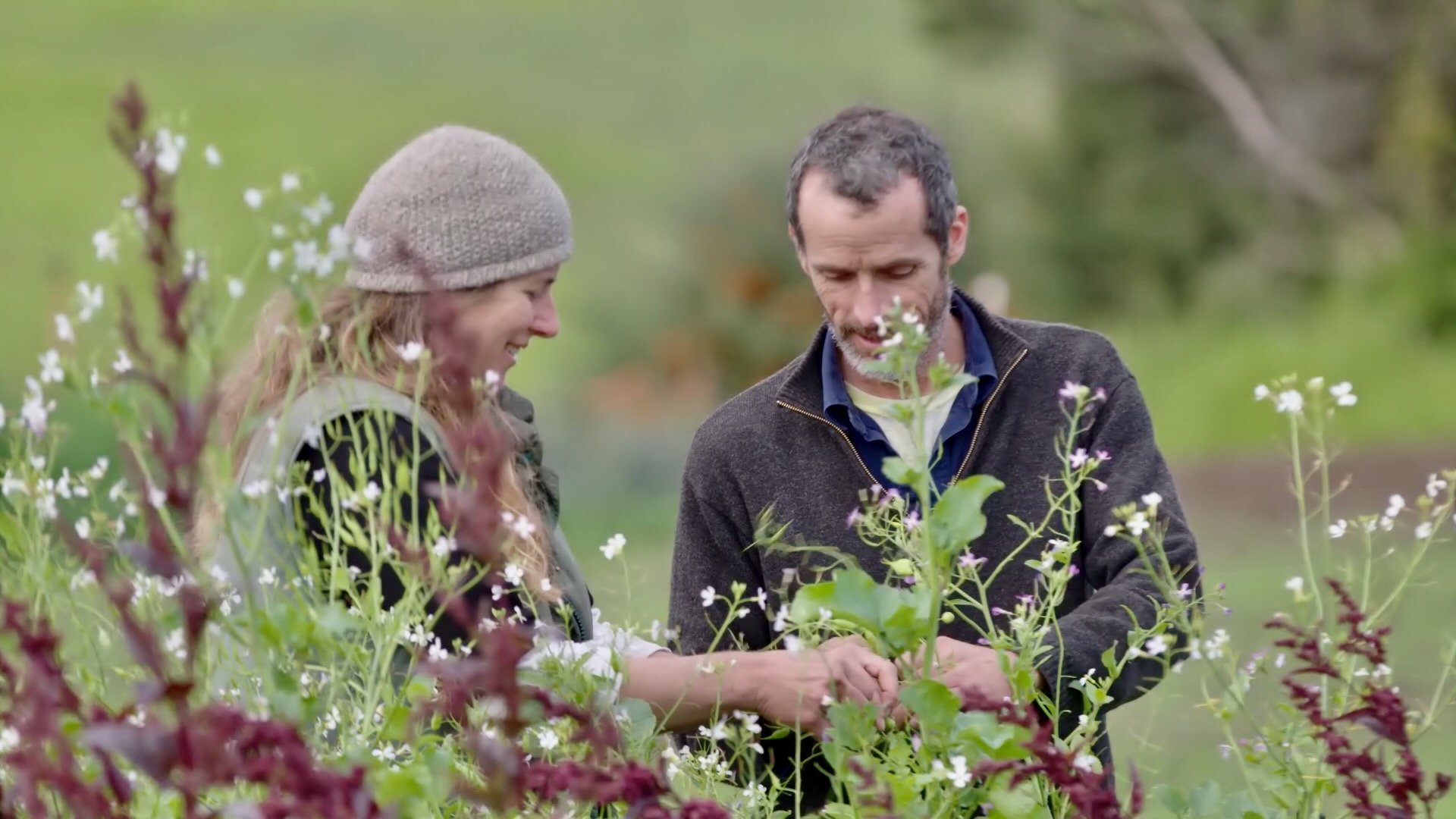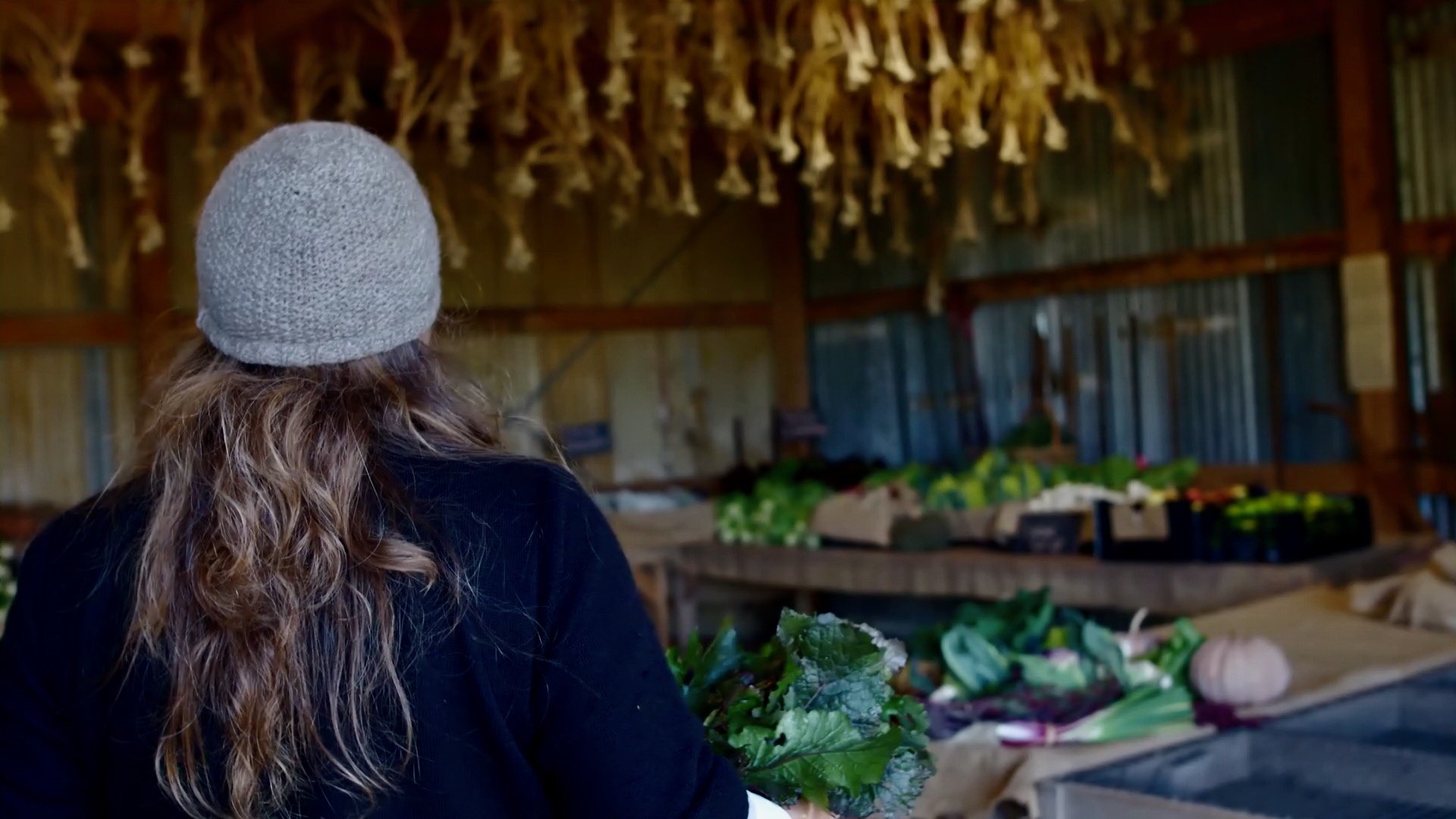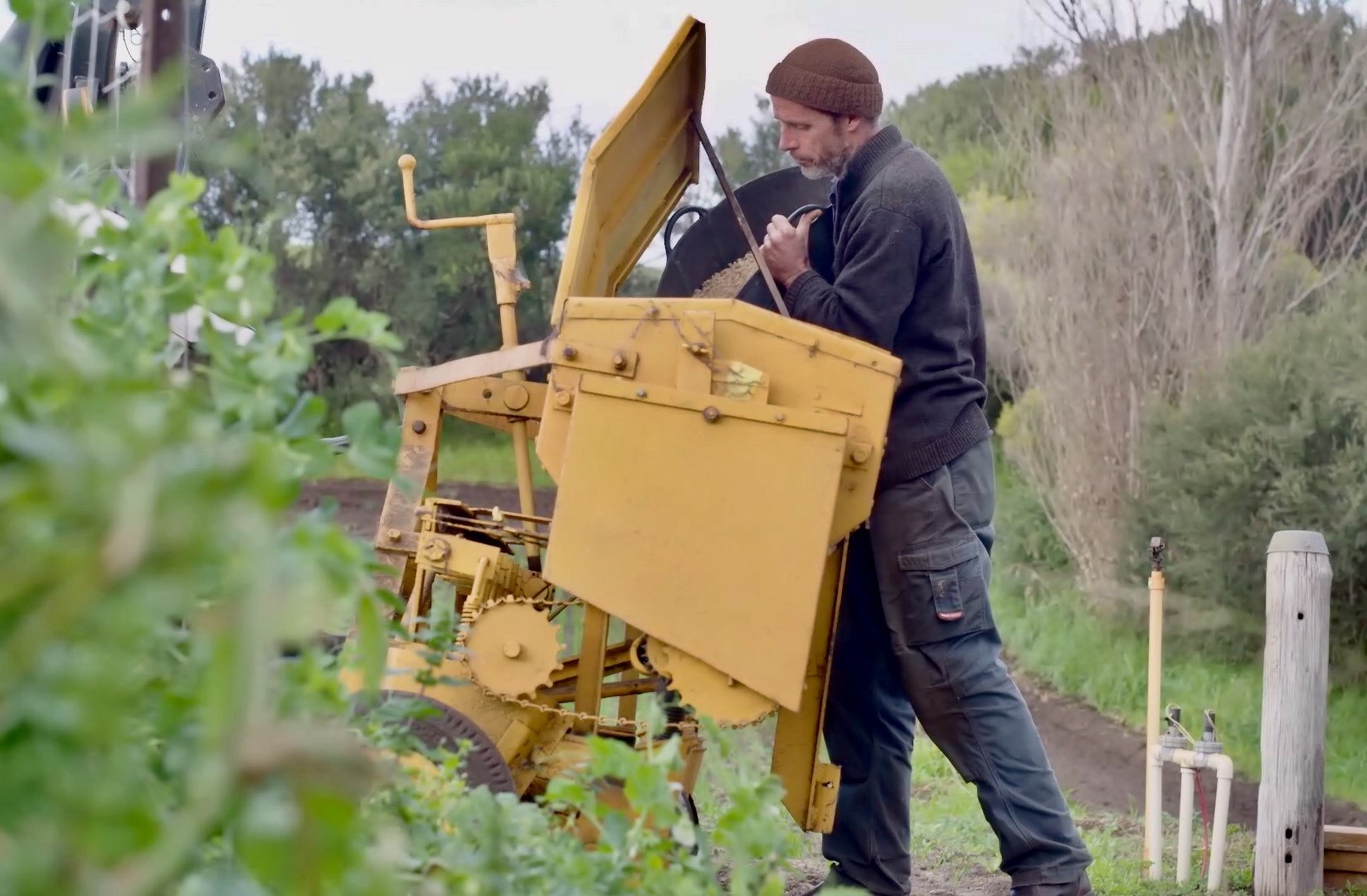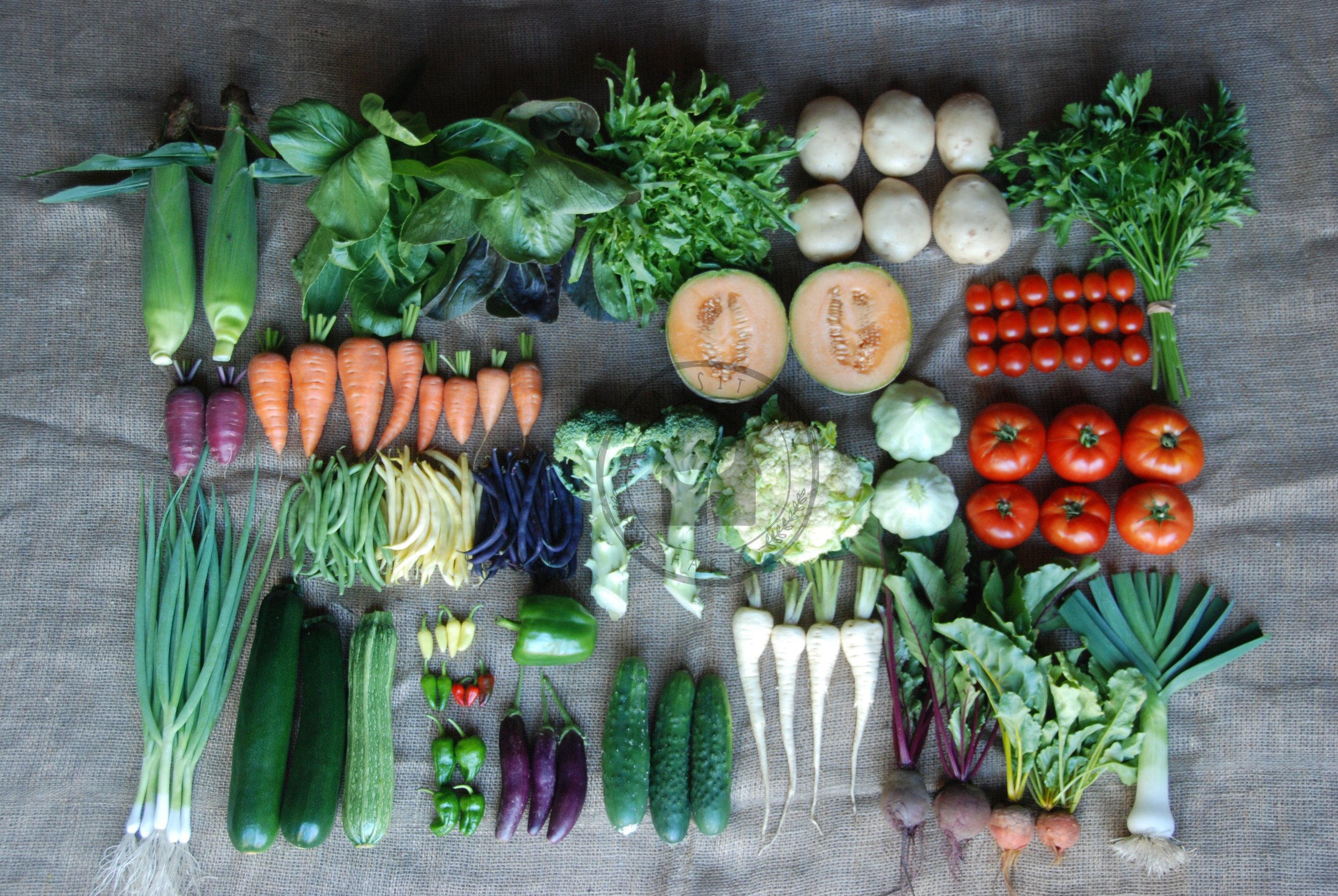Our Story - Transition Farm
/Est. 2011
Transition Farm is a family owned and operated farm and seed company set up and run by us - Robin and Peter. We are situated on unceded Bunurong country in the coastal region of the now called Mornington Peninsula.
robin and peter checking crops in front paddock AT TRANSITION FARM - 2019
Our farm is certified Demeter biodynamic and organic and currently where all the seed we offer - in our online shop and through local retailers- is grown. We have been trialing varieties for the past 16 years here in coastal Victoria searching for seasonal delights, varieties with flavour, local adaptation, yield and beauty, spent a decade as market growers and this is our fourth season putting all of our energy and growing space into seed production.
VIEW LOOKING OUT OVER OUR FIRST FARM IN NORTH EAST VICTORIA - 2002
Our first farming experience started in 2002 - a 100 acre mixed agriculture endeavour in the foothills of the Victorian Alps. We grew 80 tonnes of potatoes, 5 tonnes of carrots, hundreds of kilos of raspberries, fattened lambs and cut hay. While we weathered many of farming's highs and lows, the experience left us wondering if farming was for us. After our first child turned one, we decided to move closer to family, grow our own food, raise our children and earn a living not off the land.
Home Garden 2008
harvesting helpers in our house garden - 2009
But Peter kept thinking about contributing to our community through food and healthy food systems. After researching the CSA movement and other small scale CSA farms, witnessing humus developing in the sand on this new patch and growing more than enough vegetables for our family, we decided to try farming again but with different goals and a different relationship with the community.
peter sowing green manure crops - 2018
Transition Farm was named the first day of Spring in 2011 when, after 4 years of planting native hedgerows, incorporating biodynamic management and growing a huge range of vegetables in every season for ourselves, Peter and I sent an invitation to friends and family to join our inaugural CSA (Community Supported Agriculture) program.
We are often asked about the name, its significance. Transition - that amazing state in between two identified positions - full of potential, charged and yet free of a distinct classification. In between being a seed and being a plant. In between being dependent on a global food source and being sustainable within a community. In between growing for ourselves and feeling like we could grow for others. Although we had set goals for Transition Farm, in that exact moment of deciding let’s give this a go, we were very much in a place of transition.
CROPS GROWING IN BACK PADDOCK
Throughout the next ten years, on 2.25 acres of sand dune (within our 7 acre farm), we provided weekly harvest boxes containing 8-18 items of biodynamically grown, nutrient dense produce to up to 125 families for 35+ weeks each year and grew for acclaimed chefs all while building not only the humus in our soil but also our own understanding of the Australian Demeter Biodynamic Method.
weekly csa veggie box photo - 2020
A decade of the community growing its growers, as we, the growers, grew for the community! It was a beautifully reciprocal system.
brassica crops in back paddock - 2019
We were full of energy, worked with an ever changing group of inspired, great people, completely in awe at how our ecosystem was evolving- growing in health and diversity, and consistently produced a harvest for CSA members.
robin setting up the farm stand for our weekly csa farm pick up - 2016
I found this post from 2015 describing Why We Grow The Way We Do - just as true now as it was then!
Behind the scenes, we recognised that high quality, organic seed made our farm financially viable and consistent. We also began to look further into the seed industry - the monopolisation and control of seed. We were importing alot of seed - and questioned not only when that would no longer be possible but also if seed adapted to our region was more sustainable . And we were witnessing vegetable seed breeding occurring in labs and yet reading about and using seed that was showcasing “classic” breeding - farmer led, observational techniques that were producing resilient seed for organic growers.
musquee de provence pumpkin seed crop (Seeds removed!!) - waiting for collection by local food charity for soup - 2023
We started experimenting with our own seed. We were really impressed with what biodynamics and regionalisation could offer to a crop and the financial and food security gained by the farmer and the community. Traditional breeding techniques and selective seed saving are age old, time tested methods to improve disease resistance and yield.
And, after growing seed while still growing for our CSA and restaurants, in 2020, we decided to dedicate all of our time and growing space to seed. Seed is the beginning of a healthy food system.
washing musquee de provence pumpkin seed - saved from above picture - may 2023.
We believe that sustainable agriculture on many different scales can sustain communities. But especially as organic growers, if we realised that seed made a difference to the viability of our farm, we felt like other farmers would be experiencing the same. We could not manage seed work and run our CSA simultaneously on the limited acreage we had, so we made the hard decision to move forward with seed.
Robin making notes, taking pictures and marking the ‘kalibos’ cabbages that will move forward into seed production
Here in September 2023 we are beginning our fourth season as seed stewards. Seed is slow work and ever evolving. Our breeding goals have become more refined with each generation we grow out and seek to "improve". We continue to trial varieties and observe crops grown from the seed, noting and recording.
PETER LOADING GREEN MANURE SEED INTO THE DISC DRILL - 2019
We are constantly reflecting on our soil - the seed crops are in the ground for longer and, in our sand dune at least, when they are setting seed, they draw heavily on the resource. Our fields have whole growing seasons now in active fallow, green manure crops in between seed crops, to restore, maintain, structure and support the living earth ecosystem.
CSA boxes from the first “trial” season - summer 2012
And we also reflect on our community. Another farmer once left me with, “Go and feed people.” And the whole way home I thought about that and the power of contributing health to the community through growing nutrient dense food. Our seed work, writing about variety research and offering our experience with seasonal nuances we hope can help growers of any size.
And because seed work is slow work, it may be another several years before some of the breeding projects we are working on come to fruition. In each seed season thus far though, we have had an “aha” moment - a lettuce crop that has moved from bolting with one hot night to holding in the field for 10 days or the overall harvest of a pumpkin increasing by more then double - just through allowing crops to grow through a pressure and selectively saving seed from those that thrive and being very observant of the plant structure and breeding with plants that yield more. These small moments not only make us feel connected to the many, many, many generations of seed stewards who have come before - we are simply just continuing this agricultural act - they also strengthen our belief that the richer, more diverse the seed and food network, the healthier and more resilient our food system is.



























